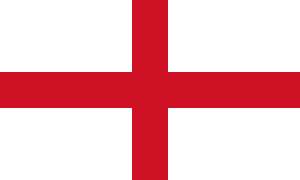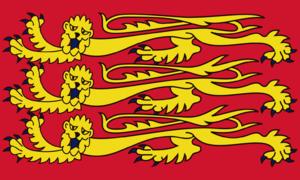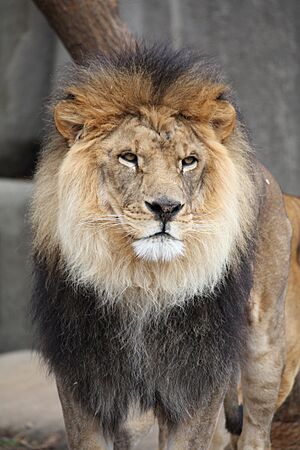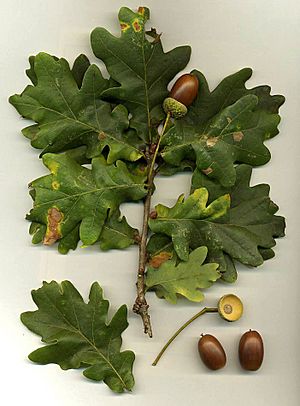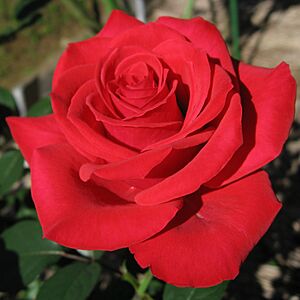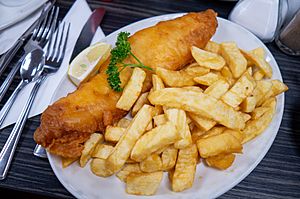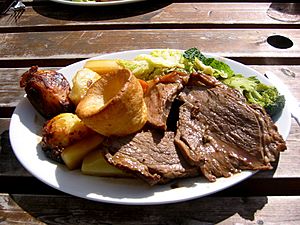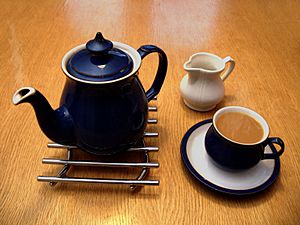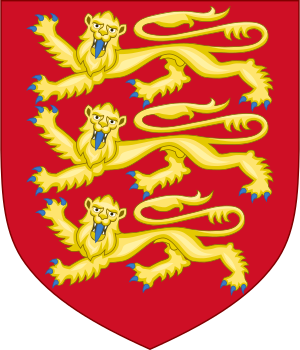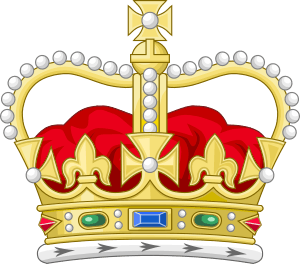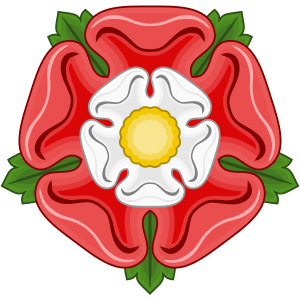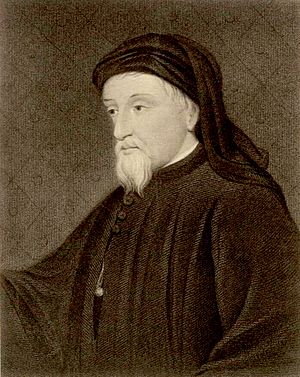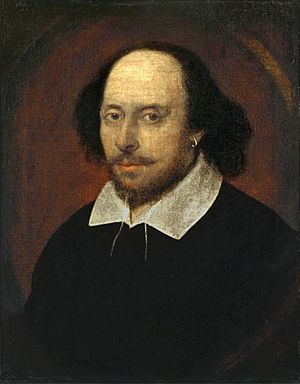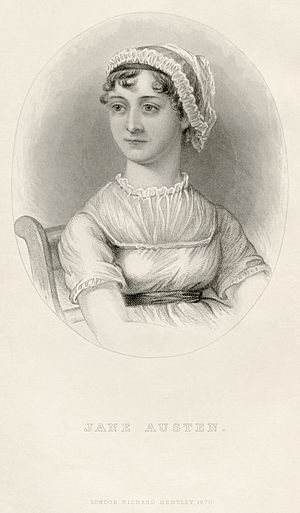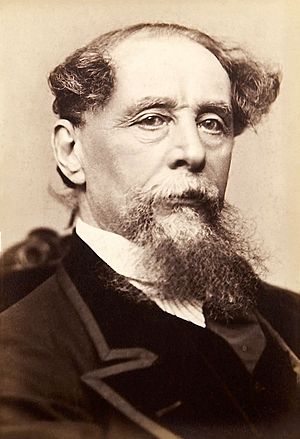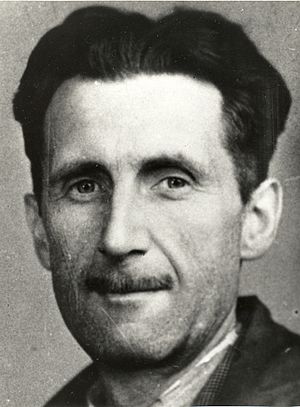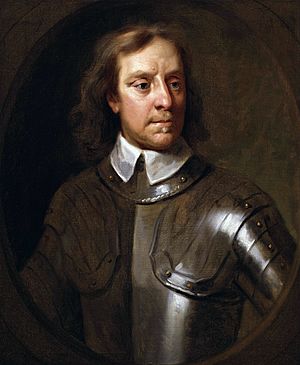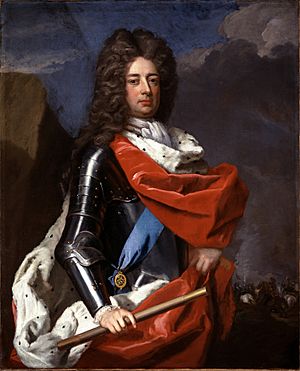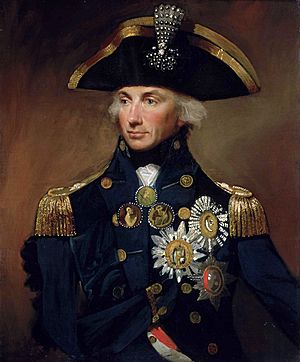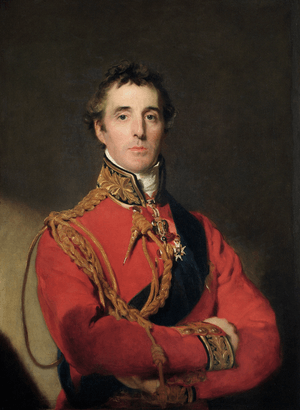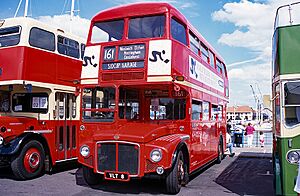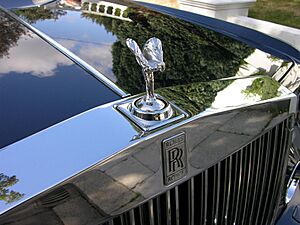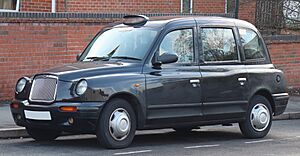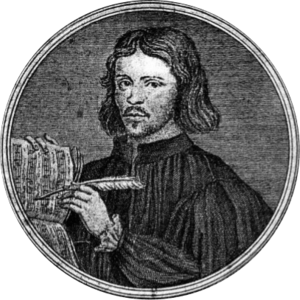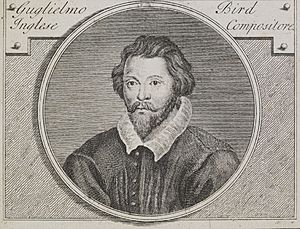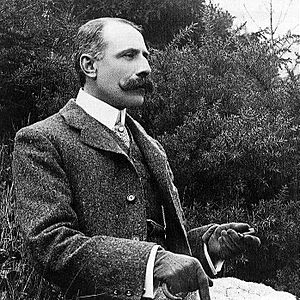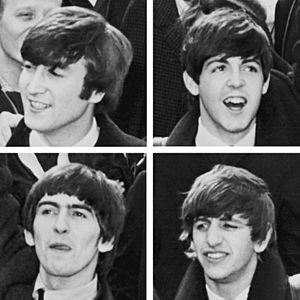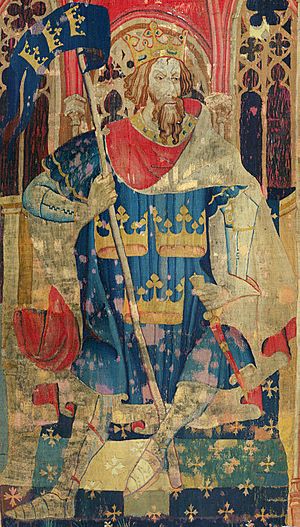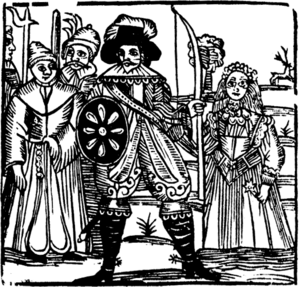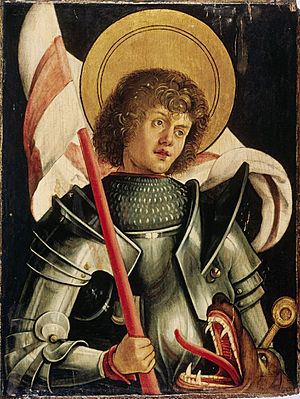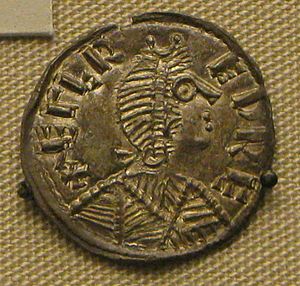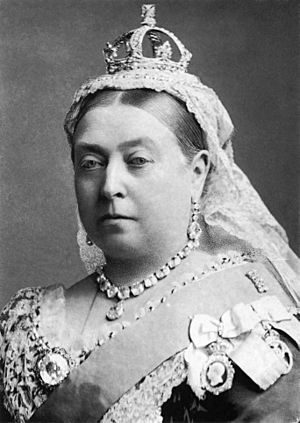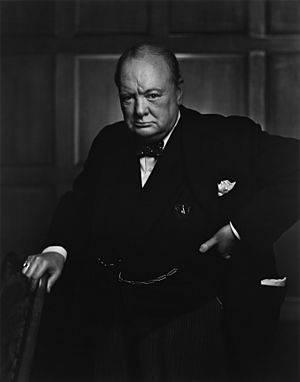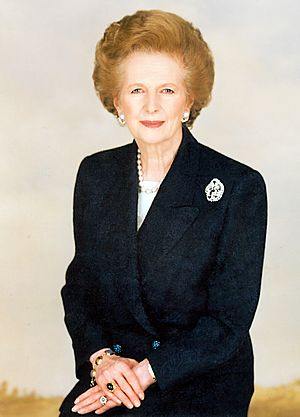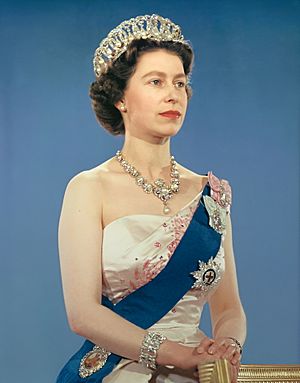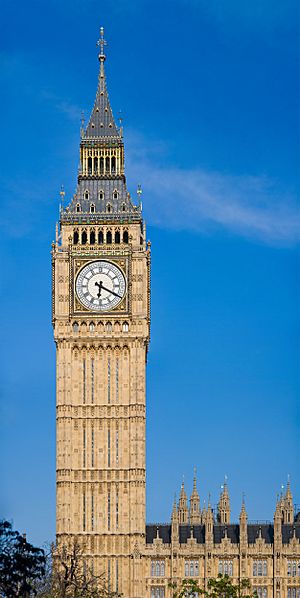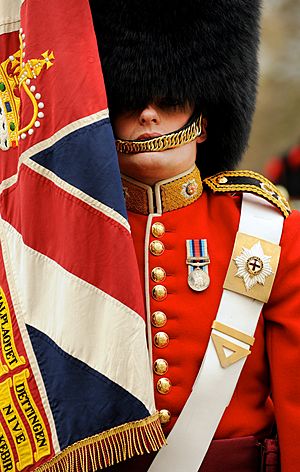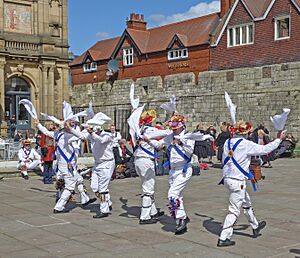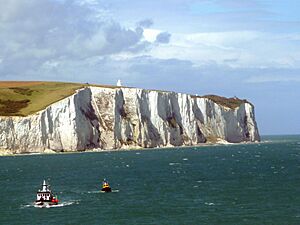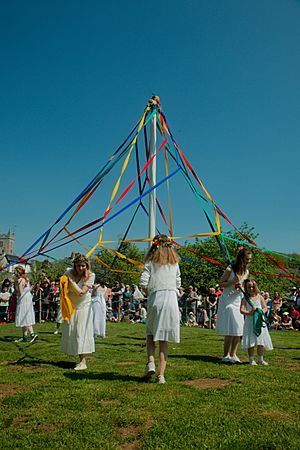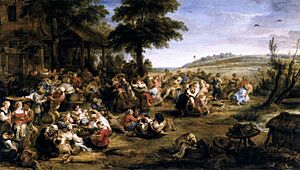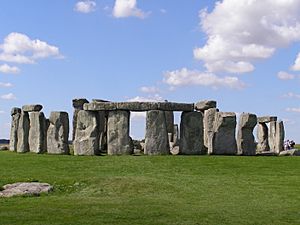National symbols of England facts for kids
The national symbols of England are special things that represent England or its unique culture. Some of these symbols are official, like the Royal Arms of England, which is a special design used in heraldry (the study of coats of arms). Other symbols might not be official, but people all over England and the world still recognize them.
Contents
Flags of England
England has two main flags that are important symbols.
| The national flag of England is called the St George's Cross. It has been England's flag since the 1200s. This flag was first used by a powerful sea city called Genoa. English kings paid Genoa to use their flag. This helped protect English ships when they sailed in the Mediterranean Sea. The red cross was also a symbol for many Crusaders (knights who went on religious wars) in the 1100s and 1200s. It became linked with Saint George, who is England's patron saint. Since 1606, the St George's Cross has been part of the Union Flag, which is the flag for the whole of Great Britain. | |
| The Royal Banner of England is also known as the Banner of the Royal Arms. It is a special flag that shows the Royal Arms of England. This banner is different from the St George's Cross. It does not represent a place, but instead shows the power of the English rulers. |
Plants and Animals of England
Certain plants and animals are important symbols for England.
| The Barbary lion is an unofficial national animal of England. In the Middle Ages, lions were kept at the Tower of London. These were Barbary lions. Brave English warrior kings were sometimes called "the Lion." A famous example is Richard I of England, known as Richard the Lionheart. Lions are often seen in English heraldry (coat of arms designs). They appear on shields or as supporters (animals holding up the shield). The lion is also used as a symbol for English sports teams, like the England national cricket team. | |
| The oak tree, especially the English oak, is the national tree of England. It represents strength and long life. The Royal Oak and Oak Apple Day remember a special event. King Charles II hid in an oak tree in 1651. He was escaping from his enemies after the Battle of Worcester. This was the last battle of the English Civil War. The Major Oak is a very old oak tree in Sherwood Forest. It is said to be a hiding place for the legendary Robin Hood. | |
| The rose is England's national flower. The Tudor rose is the official version. It shows the joining of two powerful families, the House of Lancaster (red rose) and the House of York (white rose). These families fought in the Wars of the Roses. The Tudor rose symbolizes peace after their conflict. A red rose is often used today, for example, by the English Golf Union and the England national rugby union team. |
English Food and Drink
Some foods and drinks are very famous and symbolic of England.
| Fish and chips has been a well-known English food since the mid-1800s. Many people think it is England's unofficial national dish. It is still very popular today as a tasty and affordable takeaway meal. | |
| Roast beef and Yorkshire pudding are widely eaten in England. They are also strong symbols of the country. This meal is another contender for England's national dish. There is even a song from 1731 called The Roast Beef of Old England. The French even have a nickname for English people: les rosbifs, meaning "the roast beefs." | |
| Tea is a very symbolic drink in England. In 2006, a survey found that a cup of tea was considered a national symbol. Some people think it represents all of Britain, not just England. This is because of its history with the British Empire and India. However, tea is widely and equally enjoyed across England, Scotland, and Wales. |
Heraldry and Royal Symbols
Heraldry involves special designs and symbols, often used by royalty and noble families.
| The Royal Arms of England is a coat of arms that represents England and its kings and queens. It was designed a long time ago in the High Middle Ages. The design changed over time as the Kingdom of England grew and its rulers changed. However, its main description is "Gules three lions passant guardant in pale Or armed and langued Azure." This means three gold lions, facing forward, with blue tongues and claws, on a deep red background. Even though it became part of the British royal family's symbols in 1707, the historic Royal Arms with three lions still represents England. You can see it on some coins and as the emblem for English national sports teams, like the England national football team. It is one of England's most famous national symbols. | |
| St Edward's Crown was one of the English Crown Jewels. It is still one of the most important Crown Jewels of the United Kingdom. It is often used for the coronation (crowning ceremony) of new monarchs. Since 1952, pictures of this crown have been used on coats of arms and badges. This shows the authority of the monarch across the Commonwealth realms. | |
| The Tudor rose is named after the Tudor dynasty. It became a national symbol of England around the time of the Wars of the Roses. It was a symbol of peace. This symbol combines the white rose of the Yorkists and the red rose of the Lancastrians. These two families fought for control of the royal house. The Tudor rose is also known as the Rose of England. |
Famous English Writers
England has produced many world-famous writers.
| Geoffrey Chaucer (around 1342–1400) is often called "the first finder of our language." His collection of 24 stories, The Canterbury Tales, written in Middle English, is one of the greatest poetic works in English literature. | |
| William Shakespeare (around 1564–1616) was an English poet and writer of plays. He is often called the English national poet. Many people think he is the greatest playwright (writer of plays) of all time. | |
| Jane Austen (1775–1817) was an English novelist from the Romantic period. She is most famous for Pride and Prejudice. She also published other novels like Sense and Sensibility and Emma. Jane Austen's picture is on the English £10 banknote. | |
| Charles Dickens (1812–1870) is considered the greatest English novelist of the Victorian era. His many famous books include A Christmas Carol, Great Expectations, and Oliver Twist. | |
| George Orwell (Eric Arthur Blair, 1903–1950) was an English novelist, essayist, and critic. His political works include the story Animal Farm and the dystopian novel Nineteen Eighty-Four. |
Important Military Figures
England has a history of powerful military leaders.
| Oliver Cromwell (1599–1658) was an English soldier and statesman. He helped England become a leading power again after a period of decline. He believed in religious freedom for Protestants. | |
| John Churchill, 1st Duke of Marlborough (1650–1722) led the largest allied armies during the War of the Spanish Succession (1701–1714). He fought many battles in Europe and never lost one. He also never failed to capture a fortress he attacked. | |
| Horatio Nelson (1758–1805) was a famous naval commander. His great success in battles, combined with his kindness to his sailors, made him very popular. After he died at the Battle of Trafalgar in 1805, he became a legendary hero. Nelson's Column in London's Trafalgar Square was built to honor him. | |
| Arthur Wellesley, 1st Duke of Wellington (1769–1852) was a leading military and political figure in 19th-century Britain. He famously defeated Napoleon at the Battle of Waterloo in 1815. He also served as prime minister twice. |
Iconic English Vehicles
Some vehicles are strongly linked to England's image.
| The AEC Routemaster is a famous double-decker bus. It was designed for London Transport and built by AEC. It was very popular with the public and a favorite with tourists. | |
| Rolls-Royce Limited motor cars (1906–1973) and their Spirit of Ecstasy bonnet ornament are world-renowned. The original English company was famous for its excellent engineering and elegant design. Rolls-Royce cars were known as "the best car in the world." | |
| The London taxi, also known as a black cab or Hackney carriage, has a unique and timeless design. Only these licensed taxis can pick up passengers on the street without a pre-booking. London's traditional black cabs are specially built to meet strict standards. Drivers must pass a difficult training course called the Knowledge. |
English Music and Musicians
England has a rich musical history.
| Thomas Tallis (1505–1585) was an English Renaissance composer. He is considered one of England's greatest composers. | |
| William Byrd (around 1539/40 or 1543–1623) is sometimes called the "father of English music." Some say he was as important to music as Shakespeare was to theater. | |
| Edward Elgar (1857–1934) was a famous composer. His image was even on the English £20 banknote from 1999 to 2010. Elgar wrote many pieces, including the inspiring patriotic song "Land of Hope and Glory." | |
| The Beatles are arguably the most important musical group of the 20th century. They had a huge impact on music and culture worldwide. |
English Myths and Folklore
England has many famous stories and legends.
| King Arthur is a legendary king of Britain. Stories say he defeated the Anglo-Saxons in the late 400s and early 500s. He appears in many famous stories about knights and chivalry. It's not known how the legends of King Arthur began. The first written stories about him appeared in the 1130s. People still debate whether King Arthur was a real person. | |
| Robin Hood is a heroic outlaw (someone who lives outside the law) in English folklore. He is known for stealing from the rich to give to the poor. |
Famous English People
Many individuals have shaped England's history and identity.
| Saint George (280–303 AD) is the patron saint of England. | |
| Alfred the Great (848/49–899) was King of Wessex. He became the most powerful ruler in England during his time. | |
| Lady Godiva (died between 1066 and 1086) was an Anglo-Saxon noblewoman. She is seen as an English hero. She bravely protected her people from very high taxes. | |
| Queen Victoria (1819–1901) reigned from 1837 to 1901. This time, known as the Victorian era, saw huge changes in industry, culture, politics, science, and the military. The British Empire also grew greatly during her reign. | |
| Winston Churchill (1874–1965) was voted the top person in the BBC's 2002 "100 Greatest Britons" poll. He is one of the most influential people in English history. | |
| Margaret Thatcher (1925–2013) was the first female Prime Minister of the United Kingdom. She was in power from 1979 to 1990. | |
| Queen Elizabeth II (1926–2022) was the longest-reigning monarch of the United Kingdom. She was also the first British monarch to have a Platinum Jubilee, celebrating 70 years on the throne. |
Other English Symbols
England has many other unique symbols.
| Big Ben is the famous nickname for the Great Bell inside the clock tower at the Palace of Westminster in London. The tower itself is officially called the Elizabeth Tower. It was renamed in 2012 to celebrate the Diamond Jubilee of Elizabeth II (60 years of Queen Elizabeth II's reign). Big Ben has become one of England's most recognizable symbols. | |
| Buckingham Palace is a historic London home and the main office of the reigning monarch of the United Kingdom. The palace is often used for important state events. It is a central place for national celebrations and times of sadness. | |
| The Coldstream Guards are the oldest regiment (military unit) in the Regular Army that has been continuously active. Their history goes back to the English Civil War. | |
| Morris dancing is an English folk dance usually performed with music. Dancers step rhythmically and perform choreographed moves. They often wear bells on their shins and use sticks, swords, or handkerchiefs. The earliest record of Morris dancing in England is from 1448. | |
| The White Cliffs of Dover are very symbolic in England. They face Continental Europe across the narrowest part of the English Channel. Historically, these cliffs were a symbolic guard against invasions. Before air travel, crossing from Dover was the main way to reach Europe. So, the cliffs were often the first or last sight of England for travelers. | |
| The maypole is a common sight in many English towns and villages. There are special dances and celebrations around May Day, which celebrates the start of summer. People dress up, sometimes wear flower crowns, and decorate the maypole with ribbons and wreaths. | |
| Many local fêtes (outdoor festivals) take place in spring and summer. These events are usually organized by volunteers, often from the local church. They feature colorful decorations, tents with various attractions, and serve food like tea and cake. | |
| Stonehenge is an ancient monument built between 3000 BC and 2000 BC. It is a cultural icon and has appeared many times in British culture, even on stamps. Thousands of people still gather at Stonehenge for the summer and winter solstices. |
See also
- Symbols of the United Kingdom


